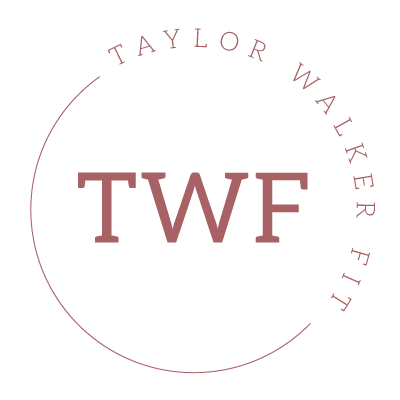Exercise during pregnancy was the absolute best thing I feel I could have done for myself during the nine month gestation period. Exercise helped me to gain weight gradually, feel comfortable in my skin and I feel helped me tremendously in my hypnobirthing practice. I tried my best to exercise up to week 39, but as my body grew and symptoms of growing a brain, heart, bones and hair took place, I had to take it day by day. Now that I am on the the side and a Pre/Postnatal Corective Exercise Specialist, I want to share why you should continue to exercise during pregnancy, how to stay safe and a few other tips to help you on your journey!
International recommendations state that a healthy pregnant woman should exercise for 30-minutes a day or 15-180 minutes/week, everyday. With that said, there is so much that is out of you control in terms of how you feel during your pregnancy. Take it day by day, check in with your doctor and move in ways that make you feel good!
Why Exercise During Pregnancy:
For baby
Increased nutrient waste exchange: Think the more you exercise the more oxygen and endorphines get to your baby and their waste is taken away. It has been said that the placenta functions 15% better during exercise then when stagnant.
Fewer fetal interventions or fetal-affected complications such as: gestational diabetes, low amniotic fluid, Forceps or vacuum.
Enhanced abilities before and after birth: In a study performed on a couple of decades ago found that babies with mothers who exercised during pregnancy can tolerate the stresses of labor better and at one year their abilities on standardized tests are better as well.
For Laboring Mother
Less time spent in pregnancy: A similar study by Clapp found that women who exercise deliver 5-7 days earlier than women who do not exercise during pregnancy.
Less weight gain: Moms who exercised average 7 lbs. and 3% less body fat.
Less time spent in labor: 50% decrease int he need to artificially rupture the membranes, induse or stimulate labor. (Clapp, 2nd, 97).
Decreased likelihood of Gestational Diabetes and Preeclampsia (pregnancy induced hypertension)
Reduced likelihood of excess weight babies
Decreased need for pain reliever: 35% less need for epidural (Clapp 2nd, 97). Exercise increases your ability to secrete adrenaline, endorphines and oxytocin. Drug-free delivery was one of the most powerful things I have ever accomplished and I relate a lot of my success to practice during my workouts.
Decreased risk for surgical interventions: 55% less need for episiotomy and 75% less need for operative intervention. (Clapp, 2nd, 97)
Safety
Exercise sessions for a healthy pregnant woman should last roughly 45 minutes and exercise should be 50-75% of their VO2 max heart rate. A good rule of thumb is to keep your heart rate under 140 BPM, but to calculate your max heart rate you take 220-your age x .4=40% x.7=70 %
You can enjoy the same types of exercise that you enjoyed pre-pregnancy. If you were not a Crossfit queen prior to pregnancy, this would not be the time to start;however, if you were exercising before, feel free to enjoy the same types of exercise and modify as your body changes.
Considerations For Mom
Relaxin: Makes your tissues lax which can lead to Diastasis Recti (abdominal separation) and misalignment of the pelvis. I loved seeing my prenatal chiropractor who helped keep low-back pain at bay and aligned my pelvis for birth.
Progesterone: Decreases smooth muscle activity which can lead to constipation, heartburn, hemorrhoids and why lying down can impeded blood flow and make you light-headed and why keeping your head elevated while lying down is recommended.
Blood volume and cardiac output increases by about 40%: Which means you may get dizzy upon standing quickly. Go from laying down to standing with caution.
Use exercise as your time to practice for labor: On average, childbirth lasts from 12-24 hours, but most mothers never take the time to practice for what will likely be the biggest fitness event in your life. Use exercise sessions to practice your breath work. For me I practiced breath and my hypnobirthing visualization and relaxation techniques. When the pain of exercise was tough, I powered through by picturing CJ in my arms under a weeping willow. I would also picture us floating in the clouds. It may sound crazy, but you are going to have the breathe through labor and delivery and it was the best pain reliever I could have ever asked for!
Make the Core Breathing Belly Pump You Best Friend: The CBBP is rhythmic inhalation and exhalation that maintains activation of the diaphragm, TVA (your abs that wrap around like a corset and your pelvic floor. The 3 areas work in tandem. As you breathe in you expand and as you exhale you draw in your TVA and lift and squeeze your pelvic floor like you are picking up a marble. You should do this while you exercise, while you are laying down and immediately postpartum.



